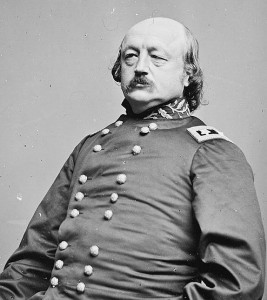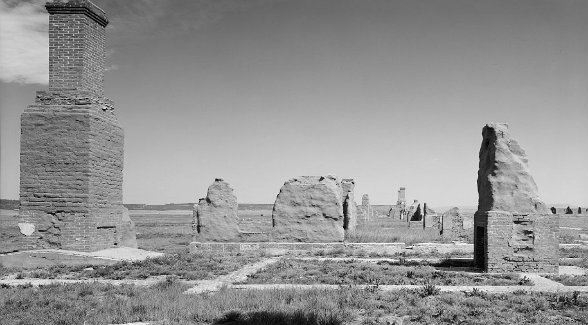Landmarks, Landowners, News Desk, Ranchland
- November 27, 2013
-
Views: 77
Land Report 100er: The Butler Family

Warning: Undefined array key "separator_height" in /home/domains/dev.landreport.com/public/wp-content/plugins/jet-tricks/includes/addons/jet-unfold-widget.php on line 942
For Over a Century, Shepherding a Spanish Land Grant
Has Been This Family’s Legacy.
Benjamin Franklin Butler (1818–93), a Massachusetts politician and Union Civil War general, was also a forward-thinking landman whose legacy ranch, now in its fifth and sixth generations, comes complete with a colorful history. While serving in Congress Butler met Thomas Benton Catron, a lawyer who would later serve as the first senator from the State of New Mexico. Catron was the largest landowner in the West at the time, having bought several Mexican land grants. He and a partner had formed the Santa Fe Ring to control economic and political life in New Mexico, and in 1870 they established an investment pool to buy land in the Mora Land Grant. Since there were no surveys or titles, Ring members would buy a partial interest from people working the land whose only claim was a share of community common lands.

When the pool disbanded, members sought buyers for their shares, and both Butler and his son-in-law, Adelbert Ames, began to purchase interests in the Mora Grant. In 1885, Butler and Catron met in New York, and supposedly, after a negotiation that went far into the night, Butler agreed to buy Catron’s share in the Mora Grant. According to family chronicles compiled by Edward (Ned) Ames, one of the Butler heirs, whatever agreement may have been reached at that meeting, there is no record of Butler’s ever having closed the deal. What followed was a litigious dispute with Catron suing Butler for his alleged failure to pay for his interests in the Mora Grant, and Butler persuading the court to have Catron removed as the attorney for a separate, ongoing suit over the partitioning of the unallocated common lands of the Mora Grant.
Of course, this era was rife with litigation over land matters; there were large financial stakes over the control of property interests, and since there were few surveys or deeds and much manipulation, nobody could be sure of who owned what land.
As the nineteenth century drew to a close, the New Mexico Territory was beset by competing legal claims to massive Spanish land grants. Butler held his land interests in the Union Land and Grazing Company, which he established in 1885. The Fort Union Ranch, now a 95,315-acre working cattle ranch near Watrous, is crossed by traces of the Santa Fe Trail and surrounds the Fort Union National Monument. The monument was actually a part of the ranch until 1954. The fort was a frequent way station for Kit Carson, and during the Civil War the Confederacy’s goal of conquering the Southwest hinged on seizing Fort Union. The CSA’s ill-fated New Mexico Campaign came to an end 60 miles from Fort Union at the Battle of Glorieta Pass. The fort was abandoned after the war, and almost a century later a grassroots effort ensued to save the fort’s structures. Private citizens and the New Mexico Department of Transportation purchased 720 acres from the Butlers.

“From there, all it took was President Eisenhower to sign the enabling legislation and the monument was created,” says Ron Harvey, lead interpretive ranger for the Fort Union National Monument. “It’s actually almost fitting that you have this cattle ranch around Fort Union Monument. One could not have survived without the other.”
The Fort Union Ranch is managed by five directors, including Ames, all descendants of General Butler. Ranching operations are run by Ken Lausten, a graduate of Colorado State School of Agriculture, who came to the ranch from California in 2011. The land’s diverse operations include a cow-calf herd, seasonal grazing by up to 1,800 pasture cattle, annual elk and pronghorn hunts, and timber and whole-tree harvest. The family owns an additional 6,000 undesignated acres in Mora County.
In partnership with the Sonoran Institute, Fort Union Ranch has developed an integrated plan for range management. The drought of 2011 was the impetus. The goal, according to Ames, was to establish an ecologically sensitive program that would allow for cattle grazing, protect wildlife, and restore natural habitat. One of the outcomes of the effort has been the creation of the High Plains Grasslands Alliance, a new collaboration.
“Our interest now is really focused on how to run the ranch successfully in a sustainable way,” says Ames. “It’s been some time since ranchers could support themselves solely on the basis of a cow/calf operation. We have to assume that these periodic droughts that have happened are going to become more frequent. So managing that trend is a challenge; it changes the way we raise cattle and manage the landscape. Whether or not you buy the whole thesis and theory of global climate change, if you’re a land manager, you’ve got to be prepared.”
Warning: Undefined array key 0 in /home/domains/dev.landreport.com/public/wp-content/plugins/elementor-pro/modules/dynamic-tags/acf/tags/acf-url.php on line 34
Warning: Undefined array key 1 in /home/domains/dev.landreport.com/public/wp-content/plugins/elementor-pro/modules/dynamic-tags/acf/tags/acf-url.php on line 34
RELATED ARTICLES
Maine Goes Public on 10 Million Acres
The last and largest contiguous block of forestland east of the Mississippi — more than …
New Mexico Land Commissioner Halts $2 Billion Project
Citing limited state input, New Mexico Land Commissioner Aubrey Dunn issued a 60-day right-of-entry suspension …
Monsanto Liable for Non-Hodgin’s Lymphoma, Ordered to Pay $80 Million
The popular weed killer Roundup was on the losing end of another major decision in …
Elk Creek Ranch Acquires Seven Lakes
For those who are passionate about outdoor pursuits, the next great adventure can’t come soon enough.





